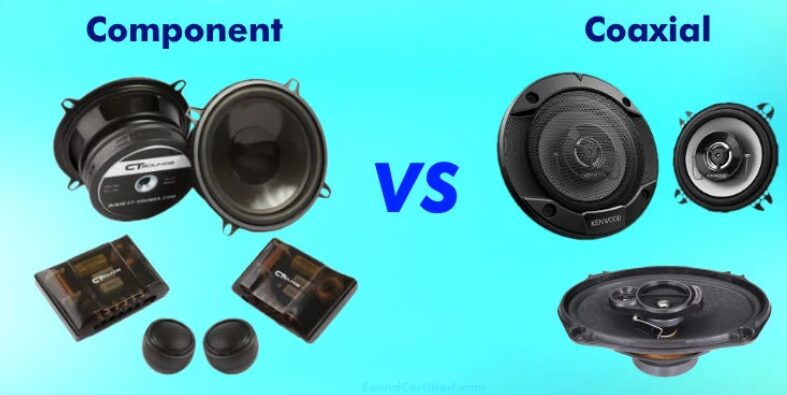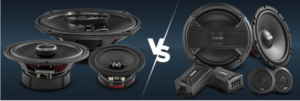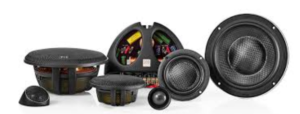Car enthusiasts are excited about everything when it comes to their car. The music system is one of the important components in a car. However, people often get confused between coaxial speakers and component speakers. Both of these speakers can efficiently elevate your music quality, but these devices have their own significant features.
Before you choose a speaker, it is necessary for you to know and identify which ones suit your purpose more. Both the coaxial speaker and component speaker have their own advantages, drawbacks and major differences.
The basics: coaxial and component speakers
Coaxial speakers
These speakers are the best full-range speakers. These are loud by themselves and can connect to multiple drivers at once. It is basically a subwoofer with low or medium frequencies and a tweeter for much higher frequencies. Some special coaxial speakers include super tweeters. Here are some features of coaxial speakers:
- It’s not just an ordinary device; you get both the woofer and the tweeter in one single device.
- These are very compact and lightweight, which makes it easy to install, and they are also friendly to your pocket.
- You can easily plug it in and play music, which is very convenient and reliable.
Component speakers
These speakers can separate the audio into different units, including a single subwoofer, a tweeter and sometimes a crossover. These speakers provide more prominent and clear sound, since all the components are separated, and you can even choose where you want to place the components.
Here are the features:
- You get separate tweeters and subwoofers in component speakers. At times, it has a midrange driver too.
- The crossovers in these speakers are external, which can help in managing the frequencies efficiently without any glitches.
- You can customise the placement of the components, which elevates the audio quality.
Core differences between coaxial and component speakers
Coaxial
- It is a single-unit device, and all the drivers are built into a single unit.
- The sound quality is very balanced, but it is less precise than component speakers.
- In these speakers, you can’t make many customizations as all the drivers are fixed.
Component
- All the different components, including the tweeters and subwoofers, are separated.
- The sound quality is top-notch as it is precise, smooth and flawless.
- You can make various customizations, including the placements and the tuning.
The installation process
Coaxial speakers are compact and simple, so they take less time to install. There are no such modifications available in these speakers; you can just plug them into the existing wiring. On the other hand, component speakers are harder to install, as you need to find the right placement for the tweeters and the subwoofers before installing them.
You can also go and check this out: The Rise of Aluminum Bullet Tweeters in Modern Speaker Design
Which speaker is ideal for you?
You should go for coaxial speakers if:
- You want to upgrade your speaker, but you have a smaller budget.
- You do not want extra hassle during installation. These speakers can be easily installed and plugged in as they are single-unit devices.
- You listen to music randomly without expecting a studio-like effect.
You should go for component speakers if:
- You want complete clarity and top-notch sound quality without any glitches.
- If you want to invest more in modifying your car and installing the different components.
- Have a plan for massively modifying your car.
The final verdict
Both coaxial and component speakers are perfect for enjoying music, but it depends on your requirements. Coaxial speakers are affordable and loud, but on the other hand, component speakers provide much more precise sound and are more expensive. If you just want to listen to music casually by investing less, you can go for coaxial speakers. But if you want to invest more and if you are a music enthusiast, you should preferably go for the component ones.
If you are confused about which size of speaker to choose, go through: 6-inch vs. 8-inch Subwoofers: Which Size Fits Your Needs?



